🌍 Geopolitics of Energy: Essential Concepts for Reading Comprehension
The geopolitics of energy explores the interplay between energy resources, national interests, and international relations. Energy is both a driver of global economic growth and a source of political tension, with countries competing to secure access to vital resources while transitioning toward sustainability. RC passages on this topic often examine issues like energy security, trade, and the impact of renewable energy. Understanding these concepts enables readers to critically evaluate the global dynamics of energy systems.
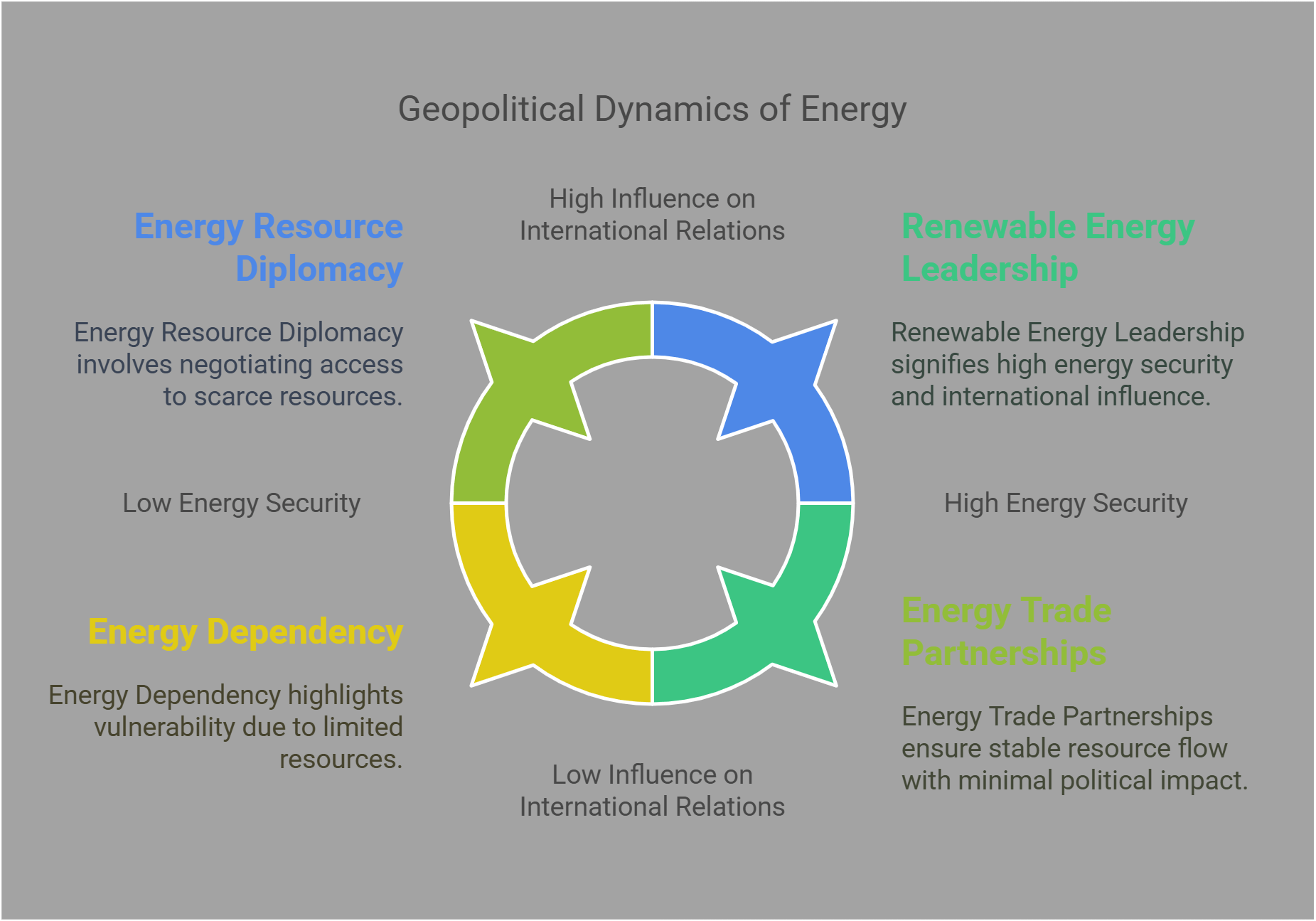
📋 Overview
This guide explores the following essential concepts in the geopolitics of energy:
- Energy Security
- Fossil Fuel Dependency
- Renewable Energy Geopolitics
- Energy Transition Policies
- Resource Nationalism
- OPEC and Oil Trade
- Hydrogen Economy
- Global Energy Markets
- Nuclear Energy Debates
- Climate-Energy Nexus
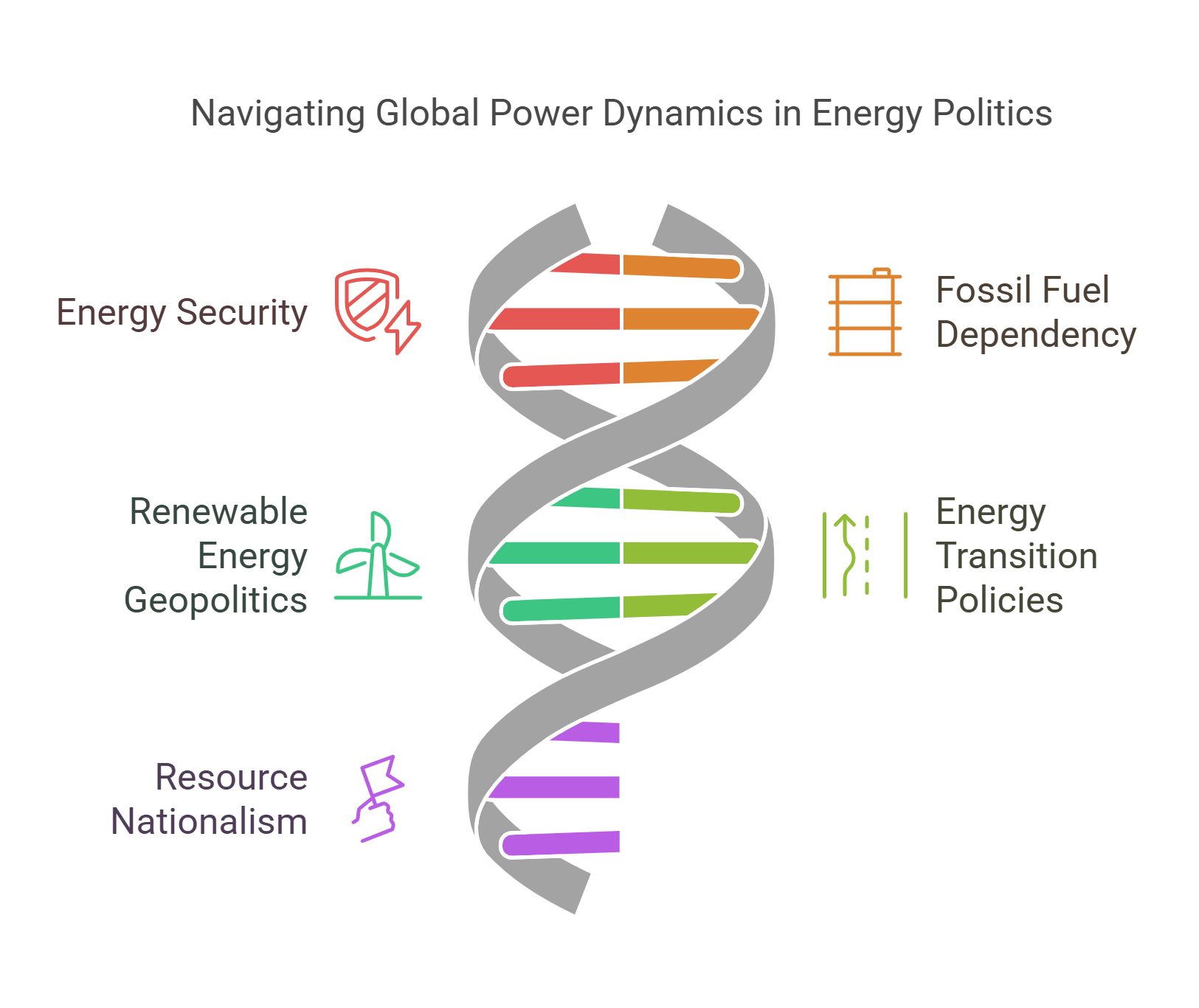
🔍 Detailed Explanations
1. Energy Security
Energy security refers to a nation’s capacity to ensure uninterrupted access to energy resources at affordable prices, both in the short and long term. It encompasses the stability of supply, infrastructure resilience, and the ability to adapt to changes in global energy markets.
- Dimensions of Energy Security:
- Supply Security: Protecting against disruptions in energy imports or production.
- Infrastructure Security: Ensuring the reliability of power grids, pipelines, refineries, and storage facilities.
- Market Stability: Maintaining predictable energy prices to avoid economic shocks.
- Key Threats to Energy Security:
- Geopolitical tensions (e.g., conflicts in resource-rich regions).
- Natural disasters disrupting infrastructure.
- Cyberattacks targeting energy grids.
Historical Context:
- The 1973 Oil Crisis highlighted vulnerabilities when OPEC nations embargoed oil exports, causing global price surges.
- More recently, European countries faced challenges ensuring natural gas supply during geopolitical conflicts involving Russia.
Explained Simply: Energy security is like a safety net for a nation’s power supply, ensuring that no sudden disruptions leave homes dark or economies stranded.
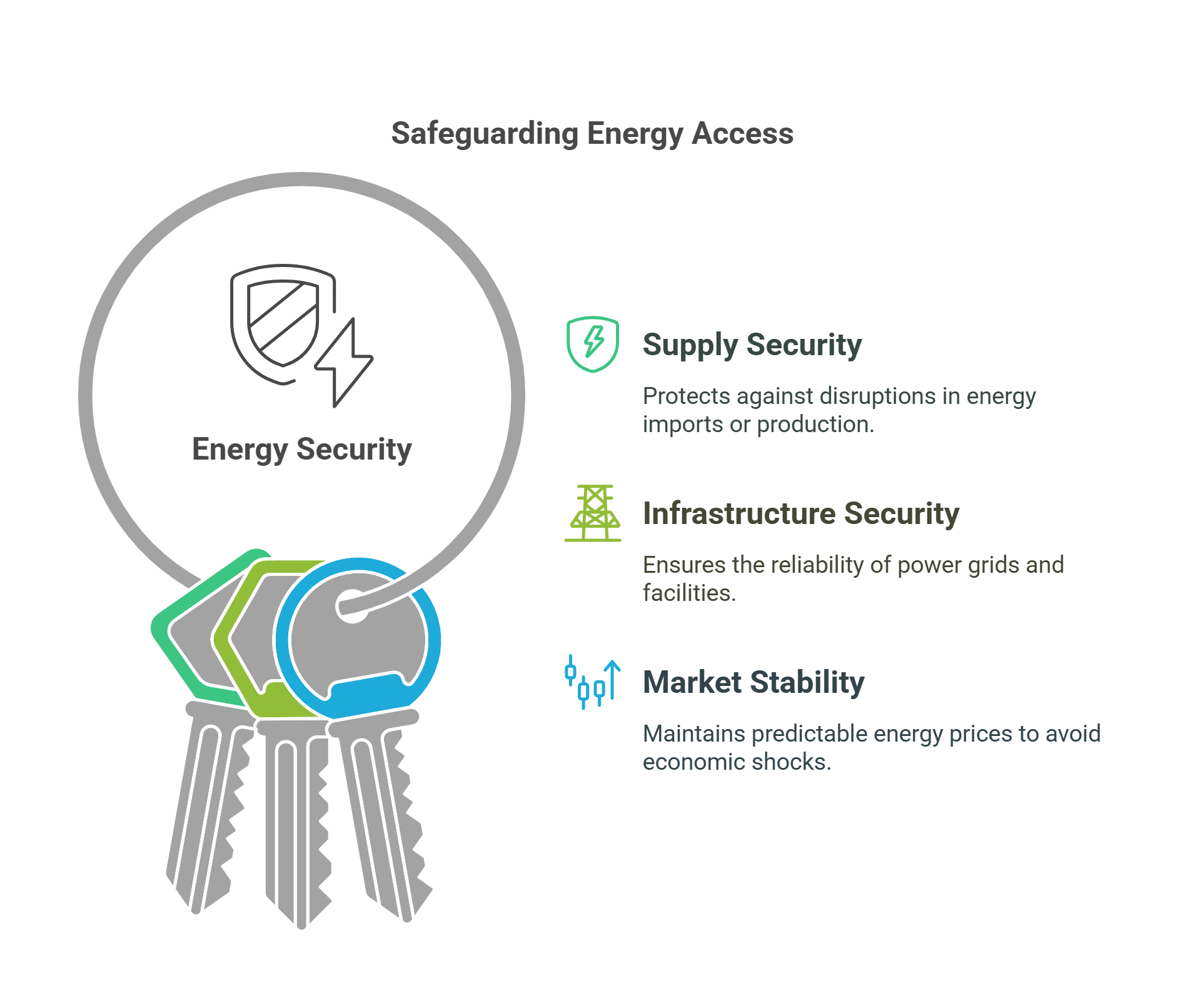
2. Fossil Fuel Dependency
Fossil fuel dependency describes a heavy reliance on coal, oil, and natural gas for energy needs. While these fuels have driven industrialization and economic growth, they also pose economic, environmental, and geopolitical challenges.
- Implications of Dependency:
- Economic Risks: Price volatility in global oil and gas markets can destabilize economies reliant on imports.
- Environmental Impact: Fossil fuels are the primary source of carbon emissions, contributing to climate change.
- Geopolitical Leverage: Nations with abundant reserves, like Saudi Arabia or Russia, hold significant influence over energy-importing countries.
- Transition Challenges:
- Replacing established fossil fuel infrastructure with renewable alternatives.
- Balancing economic growth with decarbonization efforts.
Example: India and China, with their rapidly growing economies, remain heavily dependent on coal despite global pressure to transition to cleaner energy sources.
Explained Simply: Fossil fuel dependency is like relying on a fuel that powers progress but also pollutes the environment and leaves you vulnerable to price swings.
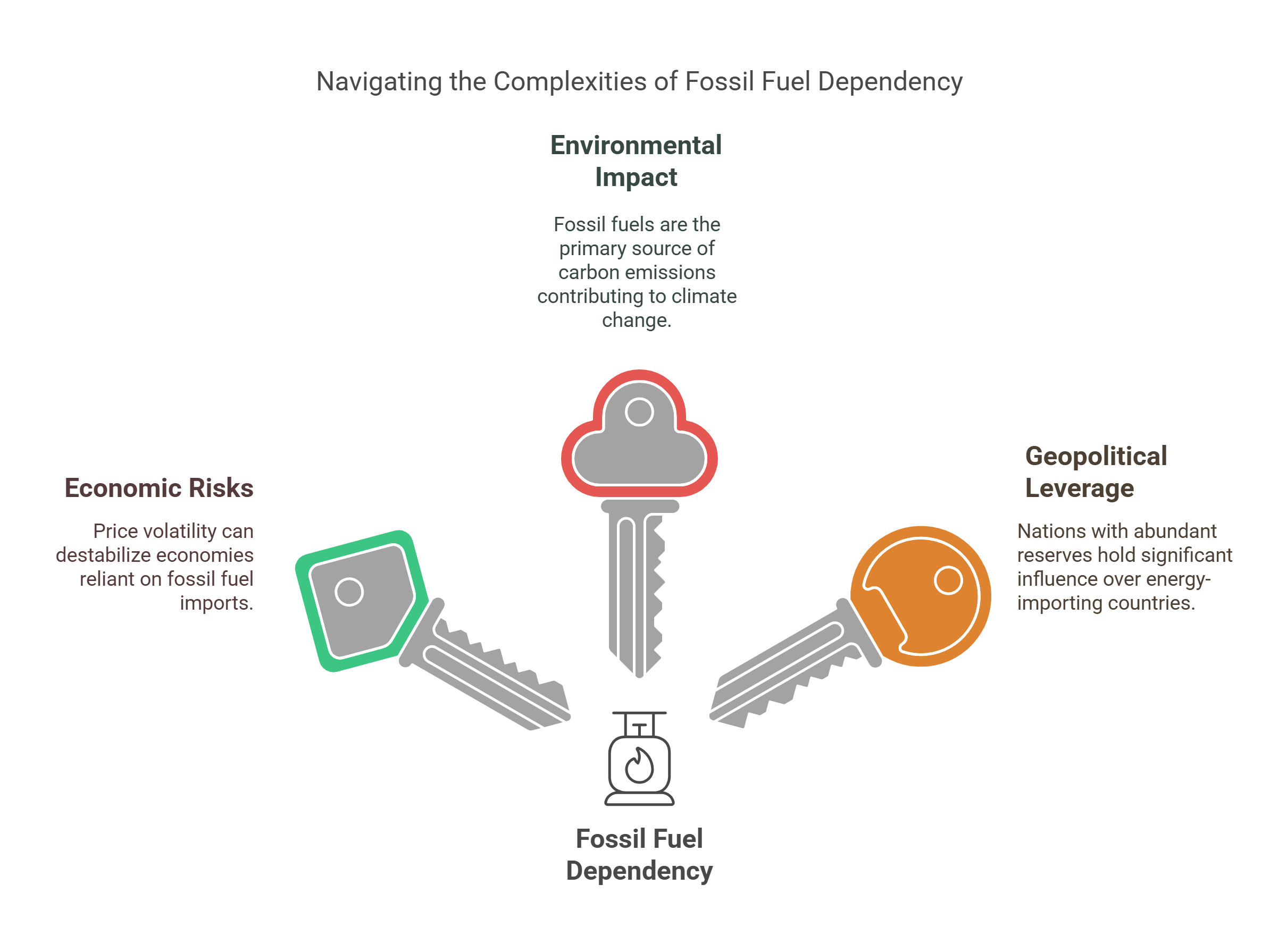
3. Renewable Energy Geopolitics
The rise of renewable energy is reshaping global power dynamics by reducing reliance on fossil fuels and diversifying energy sources. While renewable resources like sunlight and wind are widely available, the geopolitical competition is shifting to technologies and critical minerals required for renewable energy systems.
- Key Factors:
- Mineral Dependency: Lithium, cobalt, and rare earth elements are essential for batteries and wind turbines, concentrating geopolitical importance in countries like China, Australia, and the Democratic Republic of Congo.
- Technology Leadership: Nations leading in renewable energy technologies, such as solar panel production (China) or wind energy innovations (Denmark), gain influence in global markets.
- Opportunities and Challenges:
- Opportunities for energy independence as renewables reduce the need for fuel imports.
- Challenges in securing supply chains for critical minerals and technologies.
Example: The competition for rare earth elements essential for electric vehicles and wind turbines has created new alliances and trade disputes.
Explained Simply: Renewable energy geopolitics is like a game where control shifts from oil wells to lithium mines and solar panel factories.
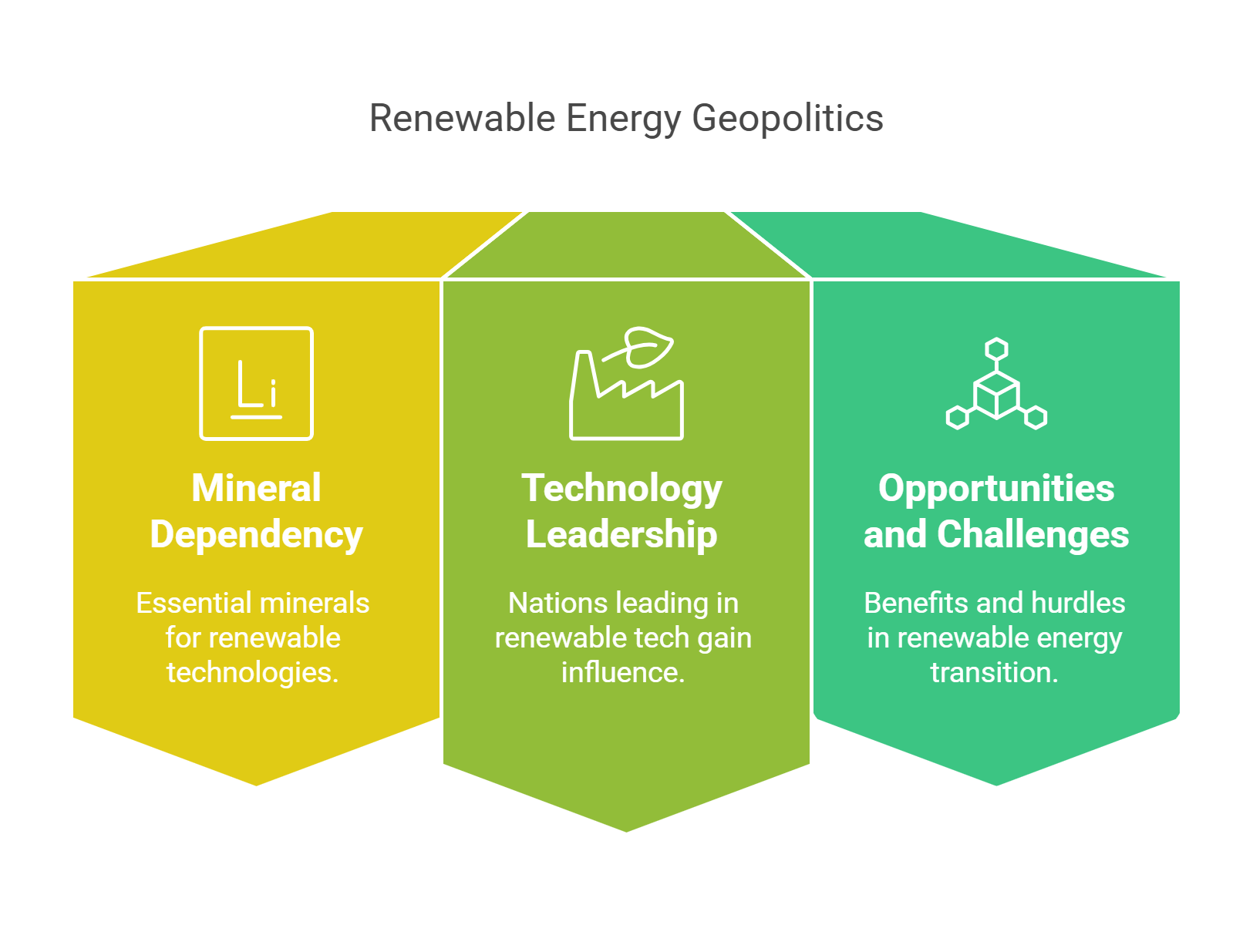
4. Energy Transition Policies
Energy transition policies aim to shift from fossil fuel-based systems to sustainable energy sources like renewables, addressing climate change and reducing carbon emissions. This transition requires balancing economic growth, energy affordability, and environmental goals.
- Core Components:
- Decarbonization Targets: Setting goals for net-zero emissions by specific dates (e.g., 2050 for many countries).
- Renewable Subsidies: Incentivizing solar, wind, and hydropower development through financial support.
- Carbon Pricing: Implementing carbon taxes or cap-and-trade systems to penalize high emissions.
- Economic and Social Implications:
- Potential job losses in fossil fuel industries.
- Opportunities in green jobs, such as manufacturing solar panels or maintaining wind turbines.
- Ensuring equitable access to energy during the transition.
Example: The European Union’s Green Deal outlines comprehensive strategies for achieving carbon neutrality by 2050.
Explained Simply: Energy transition policies are like a roadmap for replacing old, polluting engines with clean, efficient ones without stalling the economy.
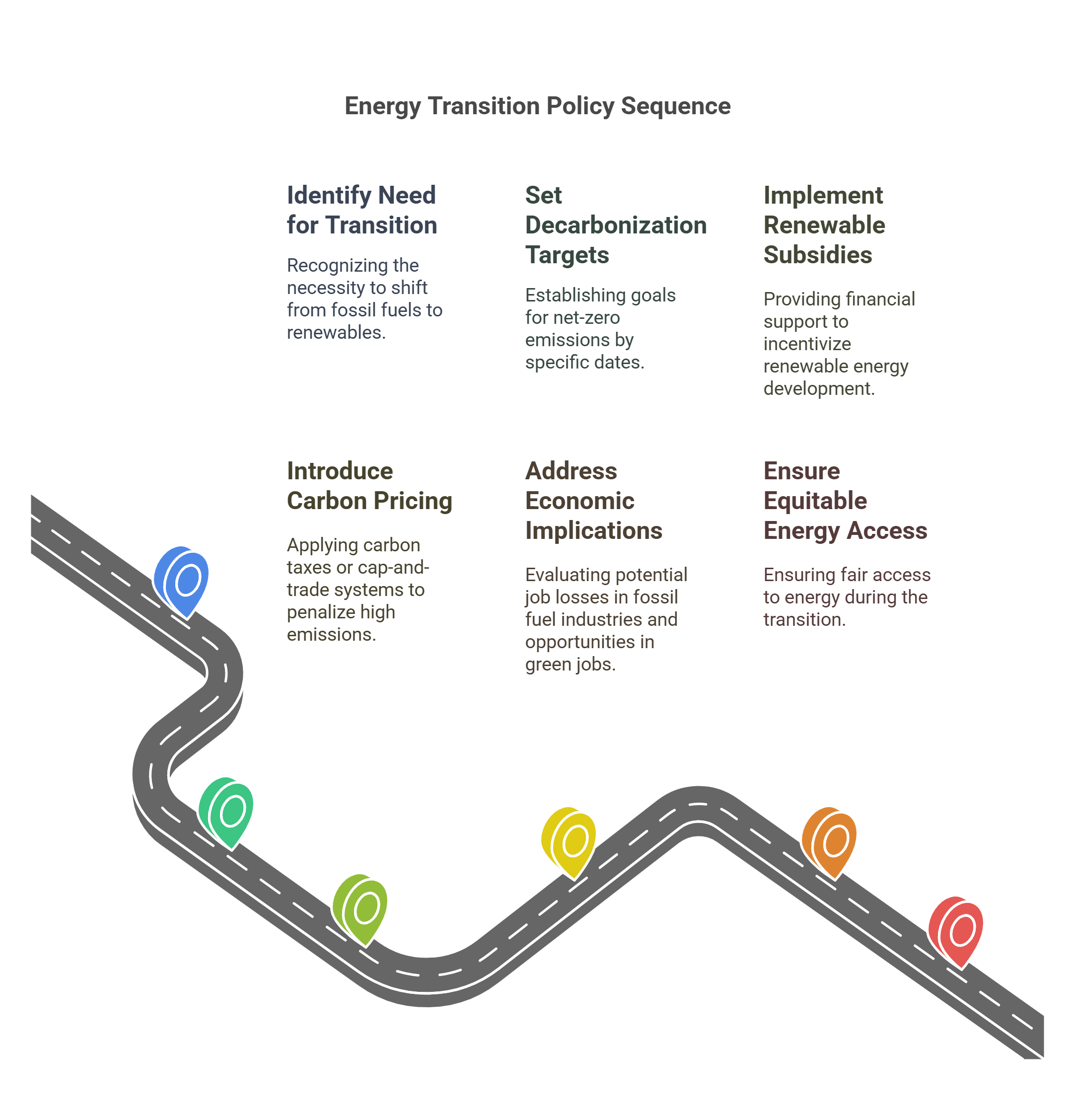
5. Resource Nationalism
Resource nationalism occurs when governments assert control over their natural resources to maximize domestic benefits. This often involves nationalizing industries, limiting exports, or imposing strict regulations on foreign companies.
- Key Drivers:
- Economic Gain: Retaining resource revenues to fund public services and infrastructure.
- Political Leverage: Using resource control to assert power in international relations.
- Public Sentiment: Responding to domestic demands for greater control over national wealth.
- Global Impacts:
- Strains on international trade, especially for critical resources like oil, gas, and minerals.
- Reduced foreign investment in resource-rich countries due to policy unpredictability.
Example: Venezuela’s nationalization of its oil industry under Hugo Chávez led to greater state control but also economic mismanagement and declining production.
Explained Simply: Resource nationalism is like locking up your treasure chest to keep outsiders away, even if it sometimes limits your ability to trade.
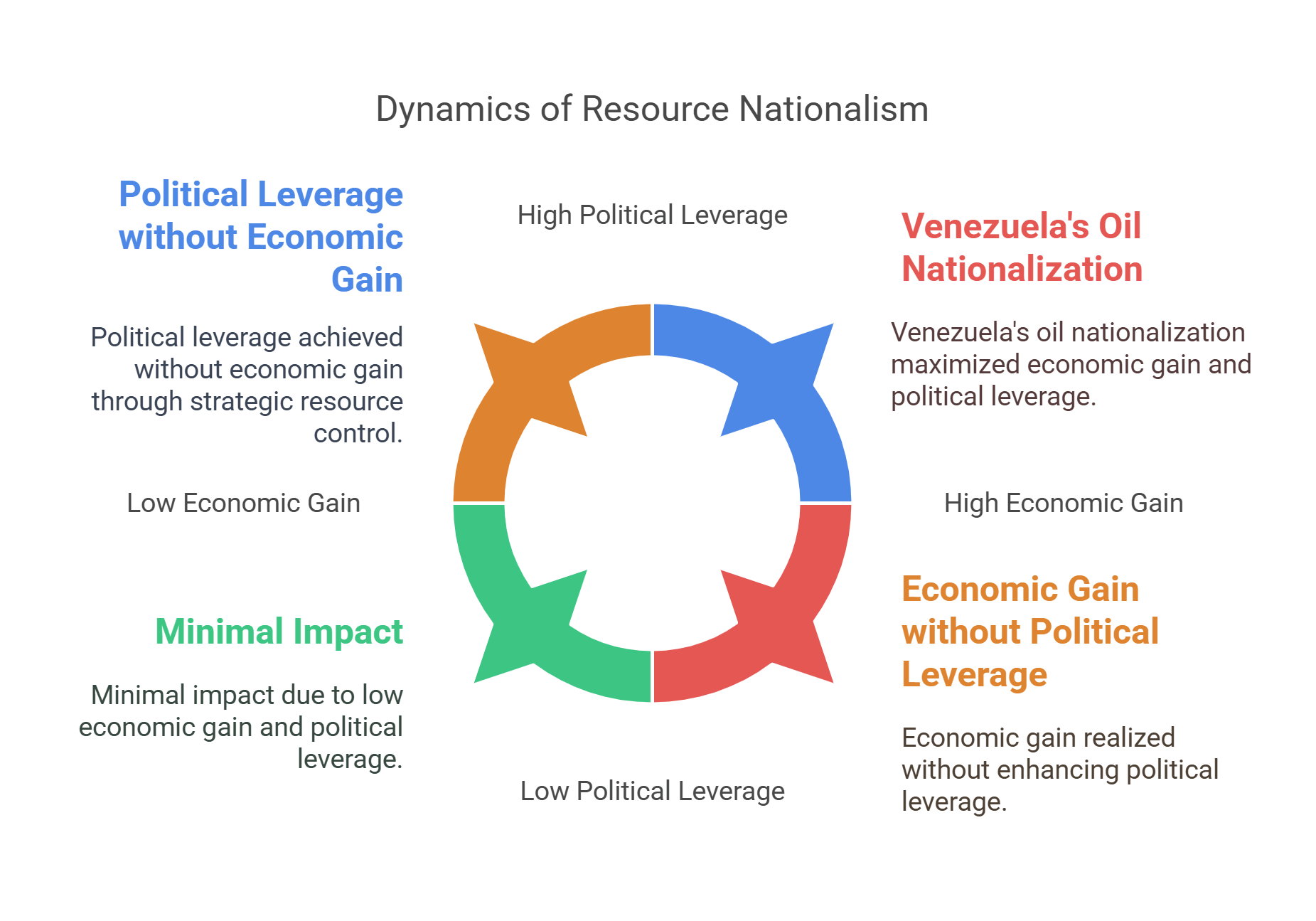
6. OPEC and Oil Trade
The Organization of the Petroleum Exporting Countries (OPEC) is a consortium of oil-producing nations formed in 1960 to coordinate and unify petroleum policies among member countries. OPEC wields significant influence over global oil markets by regulating production levels to stabilize prices.
- Key Functions of OPEC:
- Production Quotas: Sets limits on how much oil member countries produce to influence global supply and prices.
- Market Stabilization: Mitigates price volatility by adjusting production in response to demand fluctuations.
- Challenges to OPEC’s Influence:
- The rise of non-OPEC oil producers, like the U.S. (due to shale oil).
- Growing global emphasis on renewable energy and declining reliance on fossil fuels.
Example: OPEC’s 1973 oil embargo against Western nations caused a global energy crisis, demonstrating its ability to shape geopolitical outcomes.
Explained Simply: OPEC is like a gatekeeper controlling the oil tap, influencing prices and global energy stability.
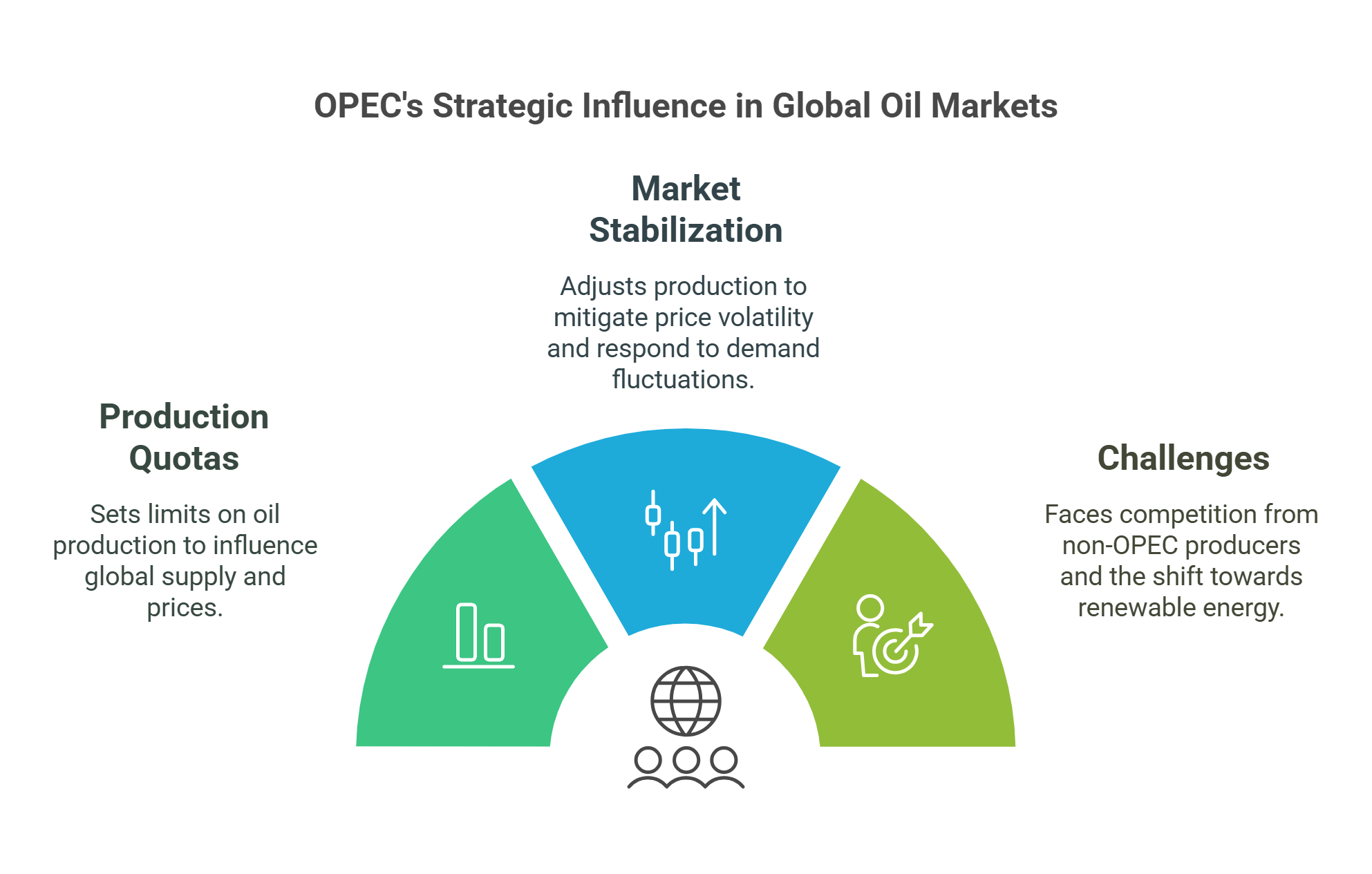
7. Hydrogen Economy
The hydrogen economy envisions hydrogen as a clean, versatile energy carrier that could replace fossil fuels in transportation, industry, and power generation. Hydrogen emits only water when burned, making it a key player in decarbonization efforts.
- Types of Hydrogen:
- Gray Hydrogen: Produced from natural gas, emitting CO₂.
- Blue Hydrogen: Derived from natural gas with carbon capture and storage to reduce emissions.
- Green Hydrogen: Produced using renewable electricity to split water via electrolysis, resulting in zero emissions.
- Applications:
- Powering fuel-cell vehicles, such as buses and trucks.
- Decarbonizing industries like steelmaking and aviation.
- Challenges:
- High production costs for green hydrogen.
- Infrastructure development for storage, transport, and distribution.
Example: Countries like Japan and Germany are investing heavily in green hydrogen technologies to achieve climate goals.
Explained Simply: The hydrogen economy is like shifting from gasoline to a cleaner fuel that powers everything without pollution.
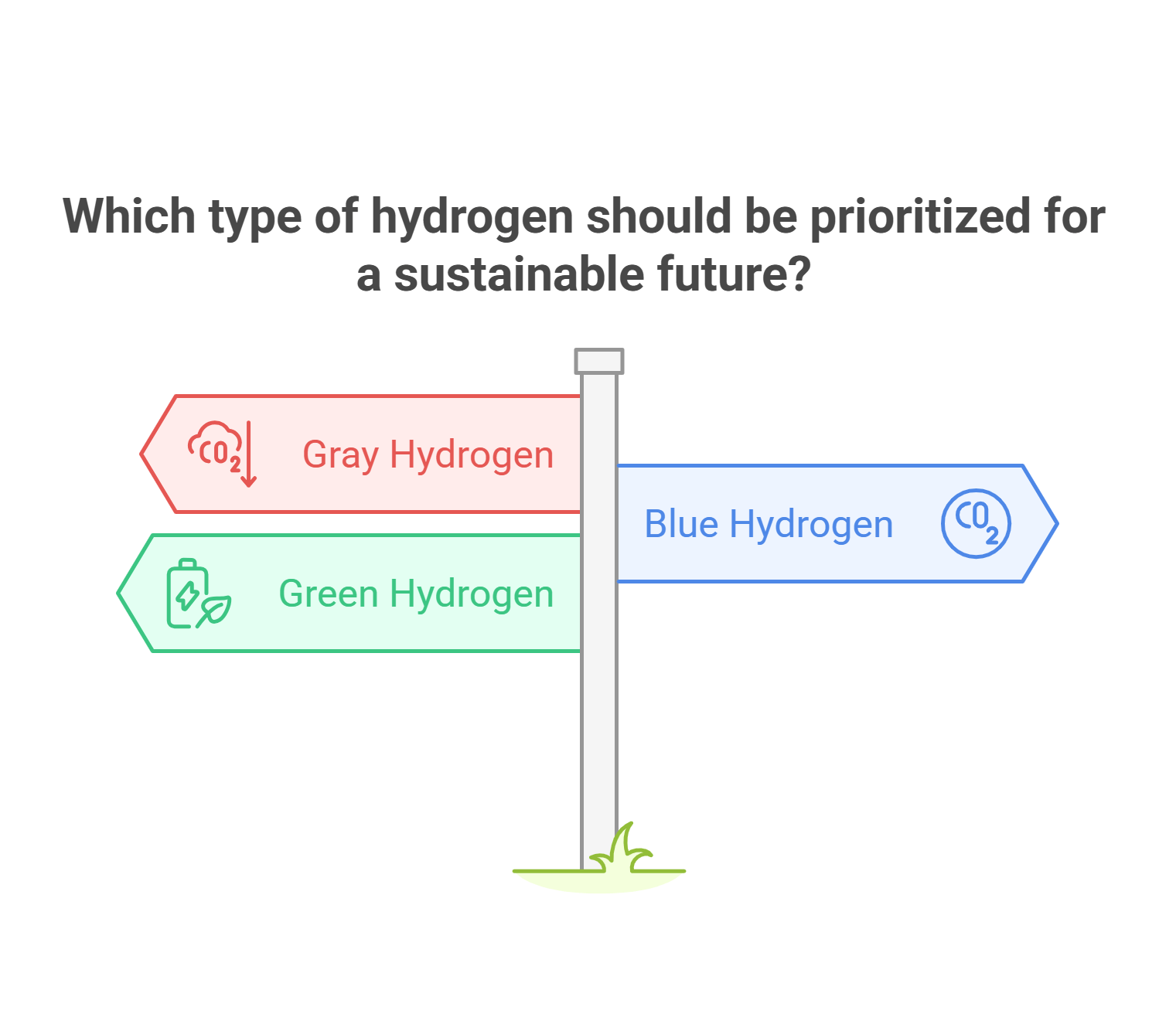
8. Global Energy Markets
Global energy markets facilitate the trade of energy commodities like oil, natural gas, coal, and electricity. They are shaped by supply and demand dynamics, geopolitical events, and technological advances.
- Key Components:
- Spot Markets: Where energy is bought and sold for immediate delivery.
- Futures Markets: Contracts for future delivery of energy at predetermined prices, helping stabilize prices.
- Major Players: National energy companies (e.g., Saudi Aramco), multinational corporations, and trading hubs.
- Factors Influencing Energy Markets:
- Geopolitical Events: Conflicts or embargoes can disrupt supply chains (e.g., the Russia-Ukraine conflict affecting gas prices in Europe).
- Technological Shifts: Advancements like fracking have boosted global oil and gas supply.
Example: The 2020 COVID-19 pandemic caused a sharp drop in energy demand, leading to plummeting oil prices and unprecedented storage challenges.
Explained Simply: Global energy markets are like a giant balancing act, with prices and availability shifting based on world events and innovations.
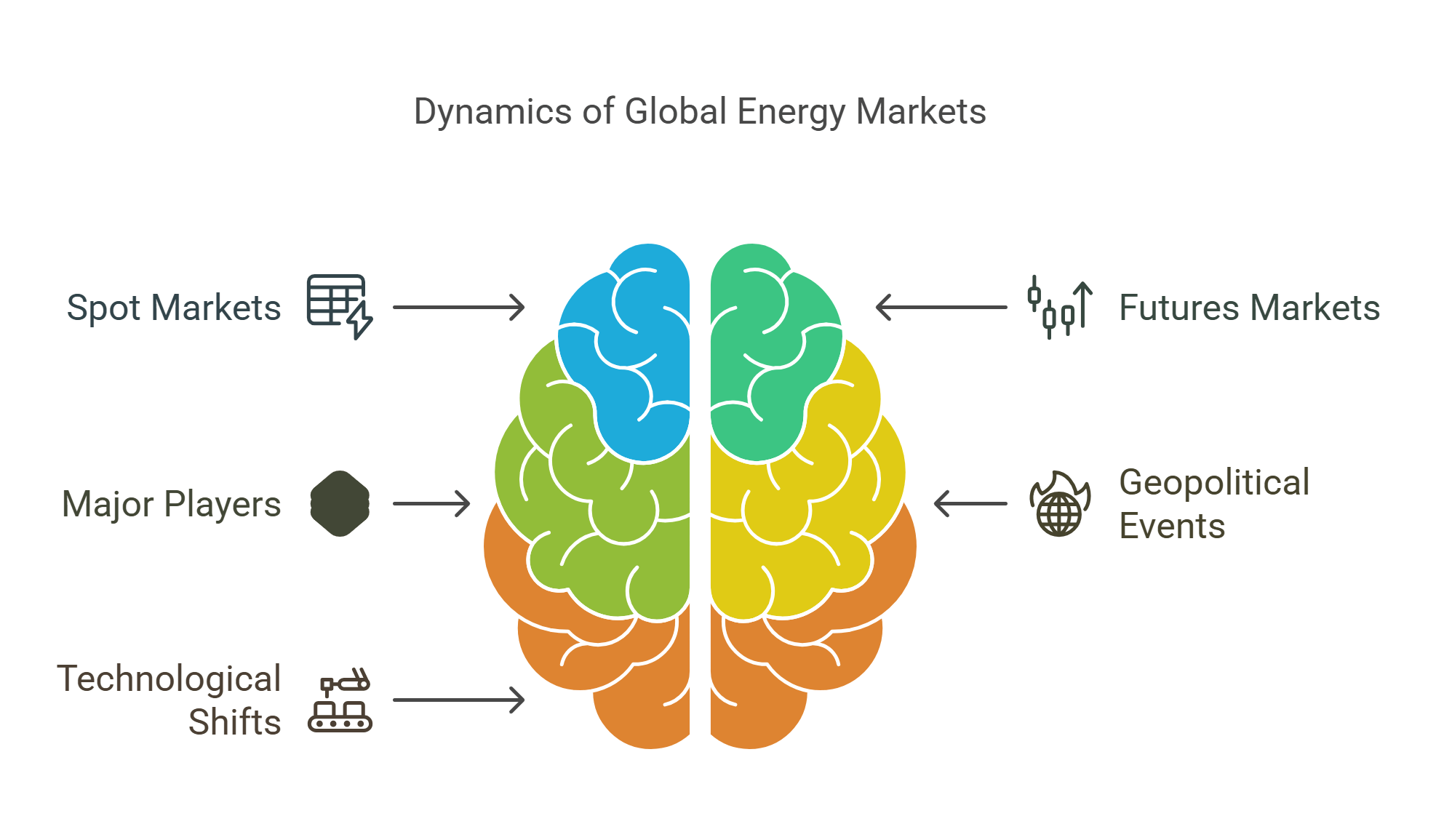
9. Nuclear Energy Debates
Nuclear energy is a low-carbon power source generated by splitting uranium atoms in a process called fission. While it offers substantial benefits for decarbonization, it remains highly controversial due to safety, waste, and geopolitical concerns.
- Advantages of Nuclear Energy:
- Reliable baseload power that operates independently of weather conditions.
- Minimal greenhouse gas emissions compared to fossil fuels.
- Criticisms and Concerns:
- Safety Risks: Catastrophic accidents like Chernobyl (1986) and Fukushima (2011) have highlighted potential dangers.
- Nuclear Waste: Long-term storage solutions for radioactive waste remain unresolved.
- Proliferation Risks: Dual-use technologies can enable nuclear weapons development.
Example: France relies on nuclear energy for over 70% of its electricity, while Germany has phased out nuclear power following public opposition.
Explained Simply: Nuclear energy is like a powerful engine—efficient and clean but requiring careful handling to avoid disasters.
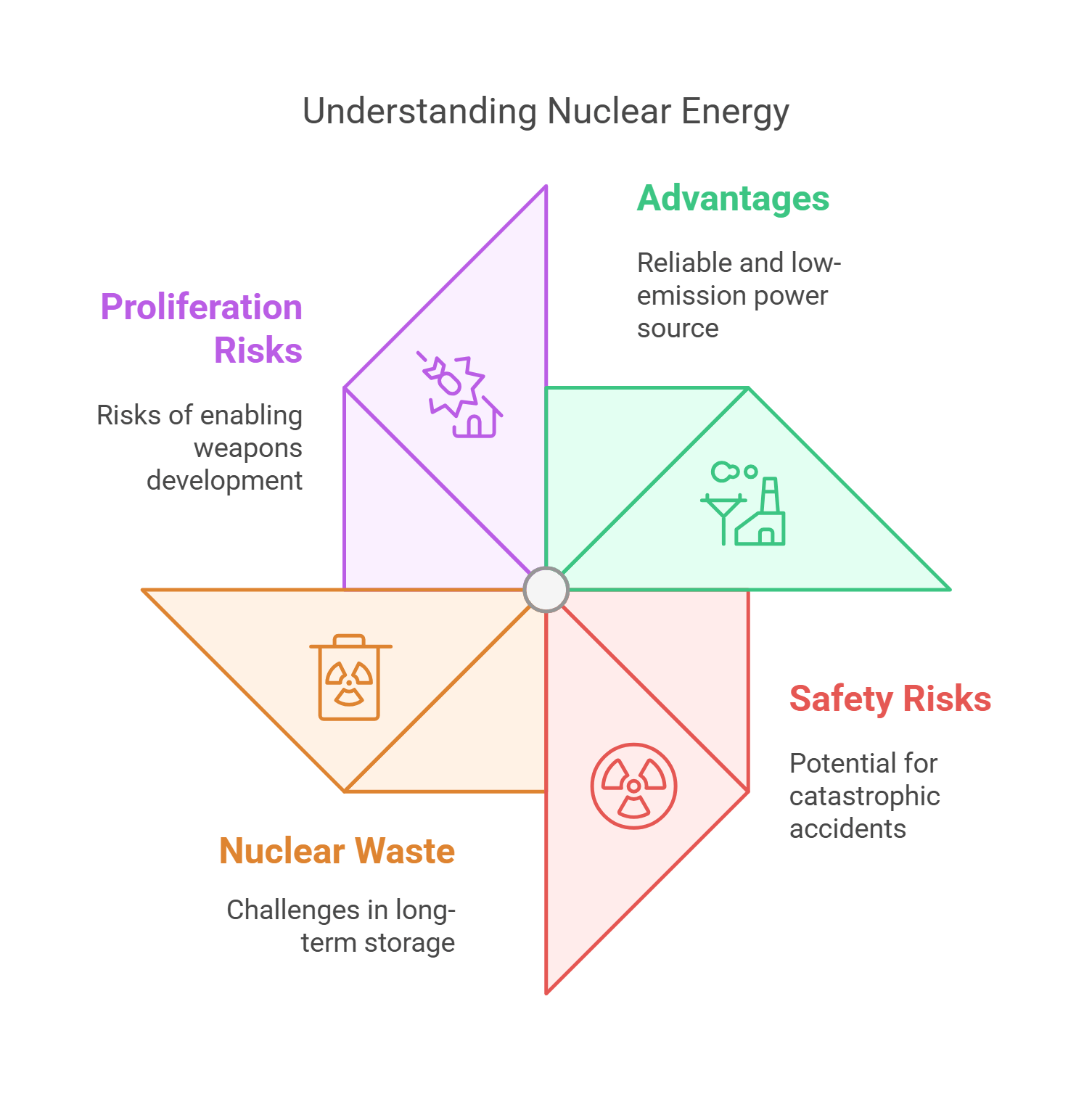
10. Climate-Energy Nexus
The climate-energy nexus examines the interconnectedness between energy production and climate change. Energy systems are the largest contributors to greenhouse gas emissions, making the shift to sustainable energy critical for addressing global warming.
- Key Issues:
- Emissions from Fossil Fuels: Power generation, transportation, and industry rely heavily on oil, coal, and gas, driving climate change.
- Energy for Adaptation: Renewable energy systems are essential for powering climate adaptation technologies, such as water desalination and resilient infrastructure.
- Global Initiatives:
- Paris Agreement: Encourages nations to limit global warming by reducing energy-related emissions.
- Net-Zero Goals: Many countries and companies aim to achieve net-zero emissions by mid-century.
Example: Investments in solar and wind energy have surged as governments prioritize decarbonization to meet climate targets.
Explained Simply: The climate-energy nexus is like a tightrope walk, balancing the need for energy with the urgency to protect the planet.
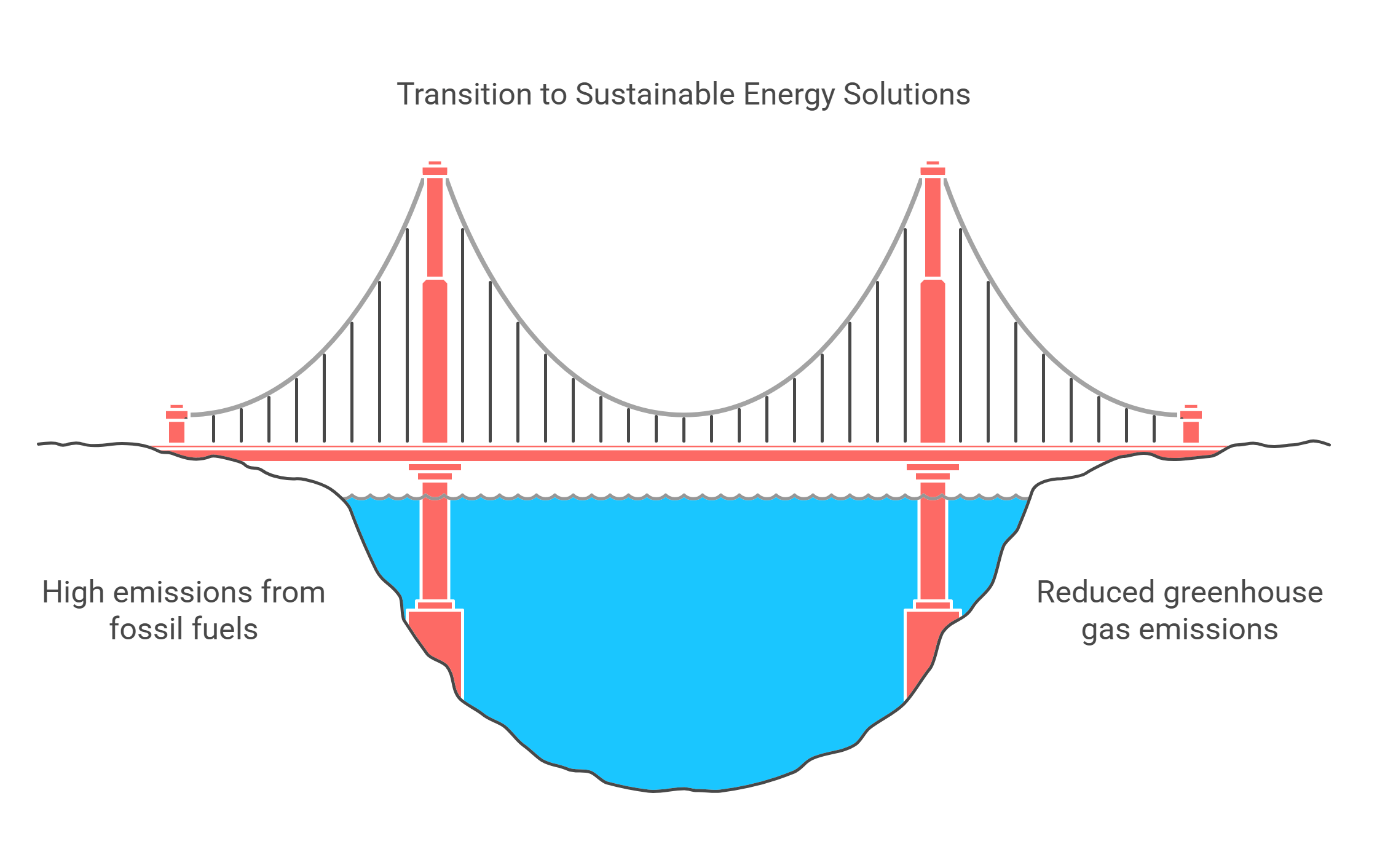
✨ Conclusion
The geopolitics of energy highlights the complex relationships between resources, policies, and global sustainability. By understanding concepts like OPEC, the hydrogen economy, and the climate-energy nexus, readers can critically analyze RC passages and explore how energy decisions shape economies, international relations, and the future of our planet.










